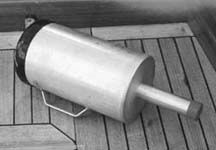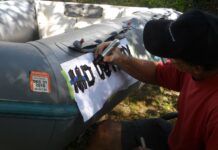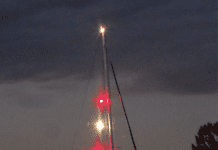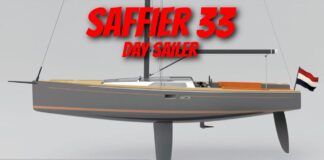Whether you’re cruising along the coast of the US or the islands of the Pacific, a load of contaminated diesel fuel can ruin your whole day. We’ve been pretty lucky so far, having picked up only one batch of questionable fuel—in Panama, we think—in some 15,000 miles of cruising.

You can’t really tell much about diesel fuel by looking at it, unless you decan’t some into a jar and let it settle, so you’re pretty much up to your own devices when it comes to filling up the tanks. We’ve bought water-clear fuel in New Zealand, ugly brown fuel in Tonga, cloudy yellow fuel in the Galapagos, blue fuel in Trinidad.
Before any of it goes in our tanks, it runs through a Baja Fuel Filter. This ingenious device was developed to filter the questionable fuel often found on the west coast of Mexico, and consists of an aluminum cylinder with handle and spout. Three ultra-fine removable screens inserted in the cylinder will remove virtually all debris and most of the water that fuel is likely to contain.
Although two sizes of Baja Filters are available, most boats use the larger, 6-1/2″ diameter filter, which has a flow rate of almost 4 gallons per minute. As long as you have the standard 1-1/2″ inside diameter deck fill found on most sailboats, the larger filter is for you.
After filling up, we remove the screens and wipe them down with paper towels, and wipe down the inside of the filter cylinder as well. This really is necessary, as the design of the Baja Filter traps several ounces of fuel in the bottom which will otherwise eventually end up all over the place, despite the tight-fitting top and bottom caps supplied with the filter.
The large Baja Fuel Filter costs $200 from West Marine (800/262-8464), and is also likely to be found in other West Coast chandleries. The smaller filter goes for about $120.
It’s a bit of a pain to disassemble, clean, and reassemble the Baja Filter every time you use it, but it’s a lot less of a pain than cleaning a fuel system that is full of crud.







































